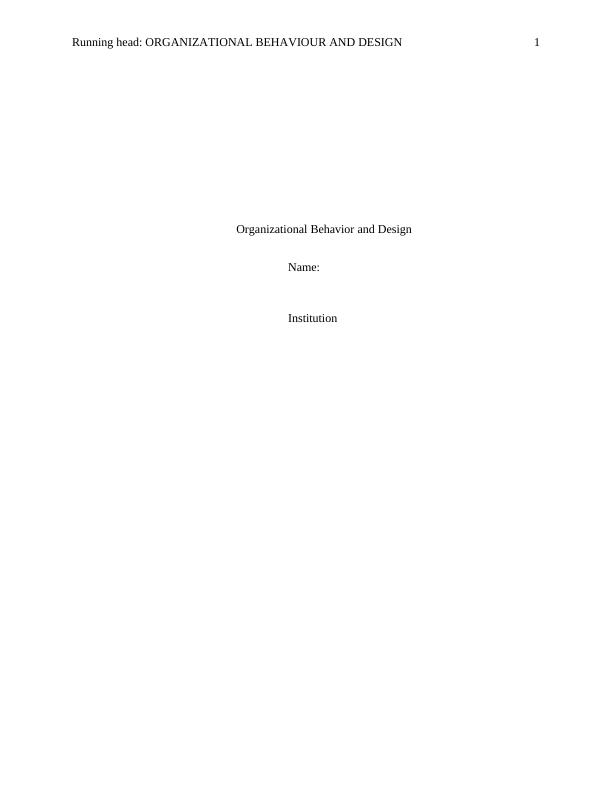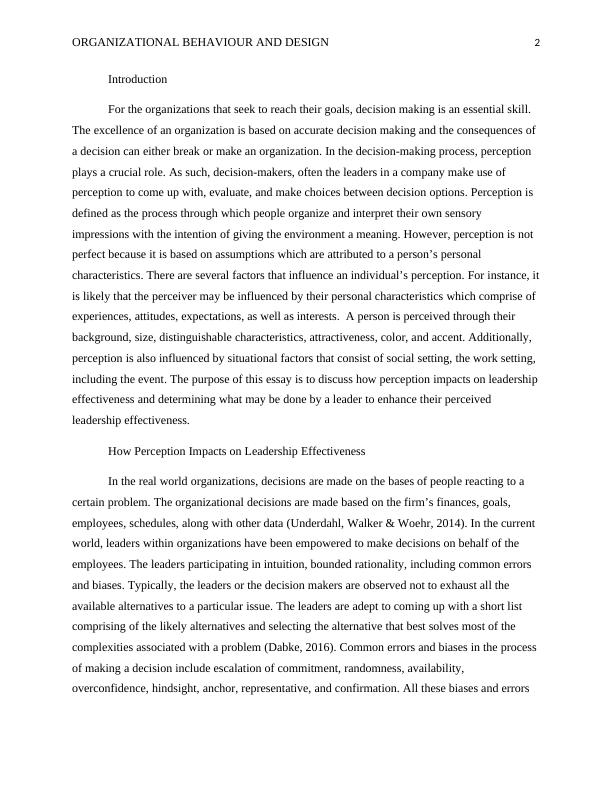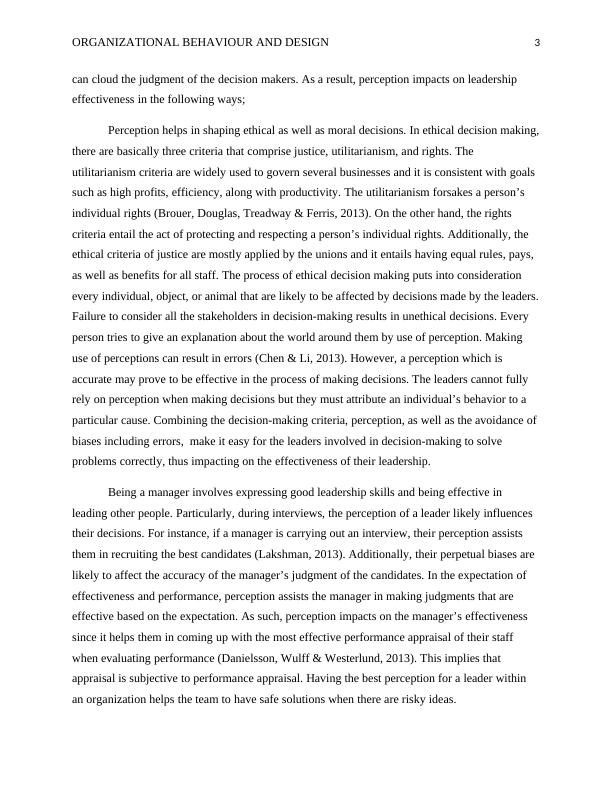Perception and Leadership Effectiveness in Organizations
9 Pages3101 Words173 Views
Added on 2023-05-31
About This Document
This essay discusses how perception impacts on leadership effectiveness and what leaders can do to enhance their perceived leadership effectiveness. It also explores the importance of perception in shaping ethical and moral decisions, performance appraisal, and developing creative solutions in organizations.
Perception and Leadership Effectiveness in Organizations
Added on 2023-05-31
ShareRelated Documents
End of preview
Want to access all the pages? Upload your documents or become a member.
GSBS 6004 : Organizational Behaviour and Design
|9
|3066
|27
Management Organizational Behavior Question 2022
|5
|1082
|33
Factors Affecting Managerial Ethical Decision Making
|7
|1847
|151
Perception Bias And Decision Making Essay 2022
|10
|2801
|30
Organization and Leadership | Assessment
|16
|3066
|14
Managerial Roles, Stakeholders, Ethics, WTO, Contingency Factors, Cultural Intelligence, Porter's Strategies, Entrepreneurship, Virtual Learning Organizations
|3
|1001
|162



